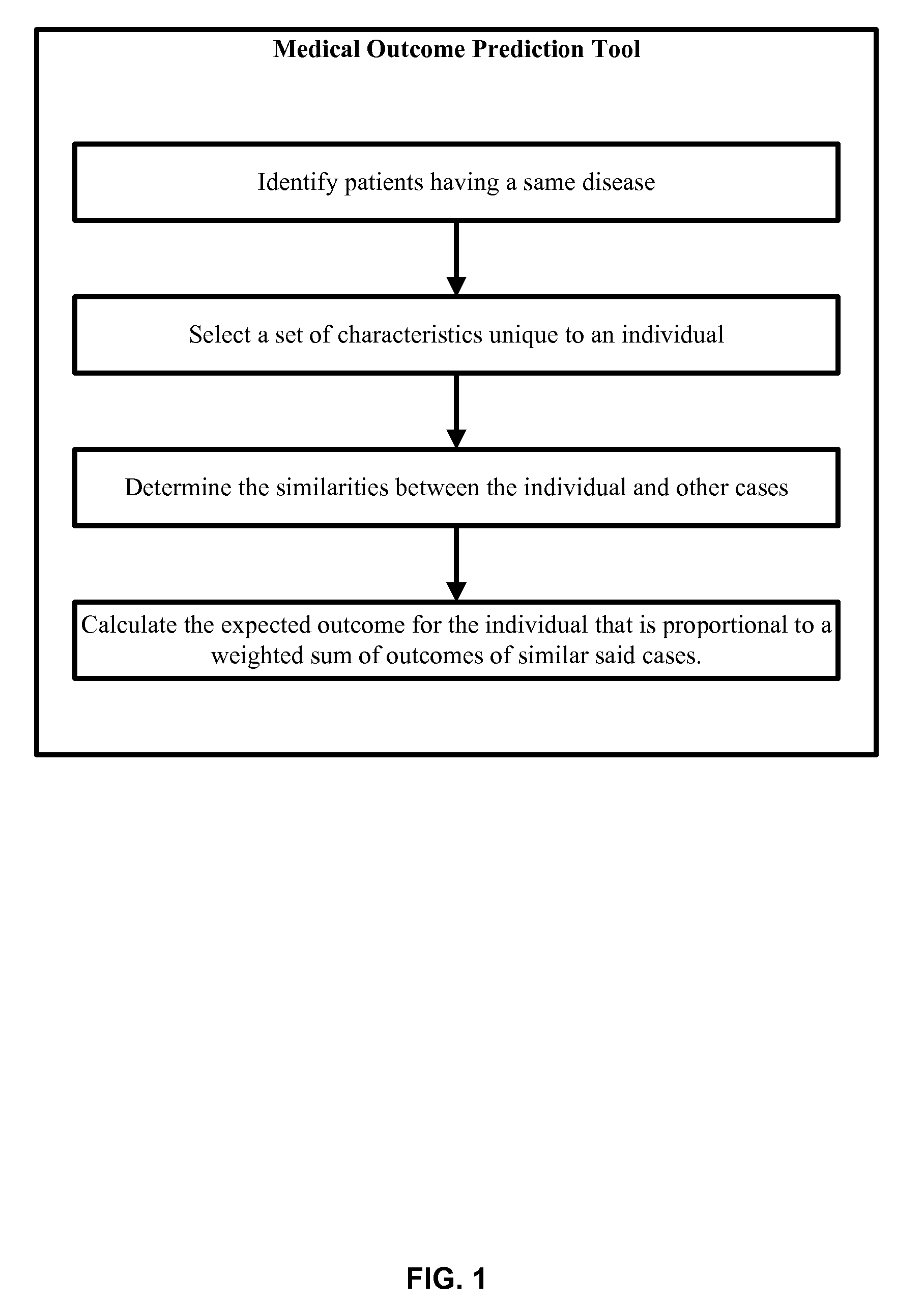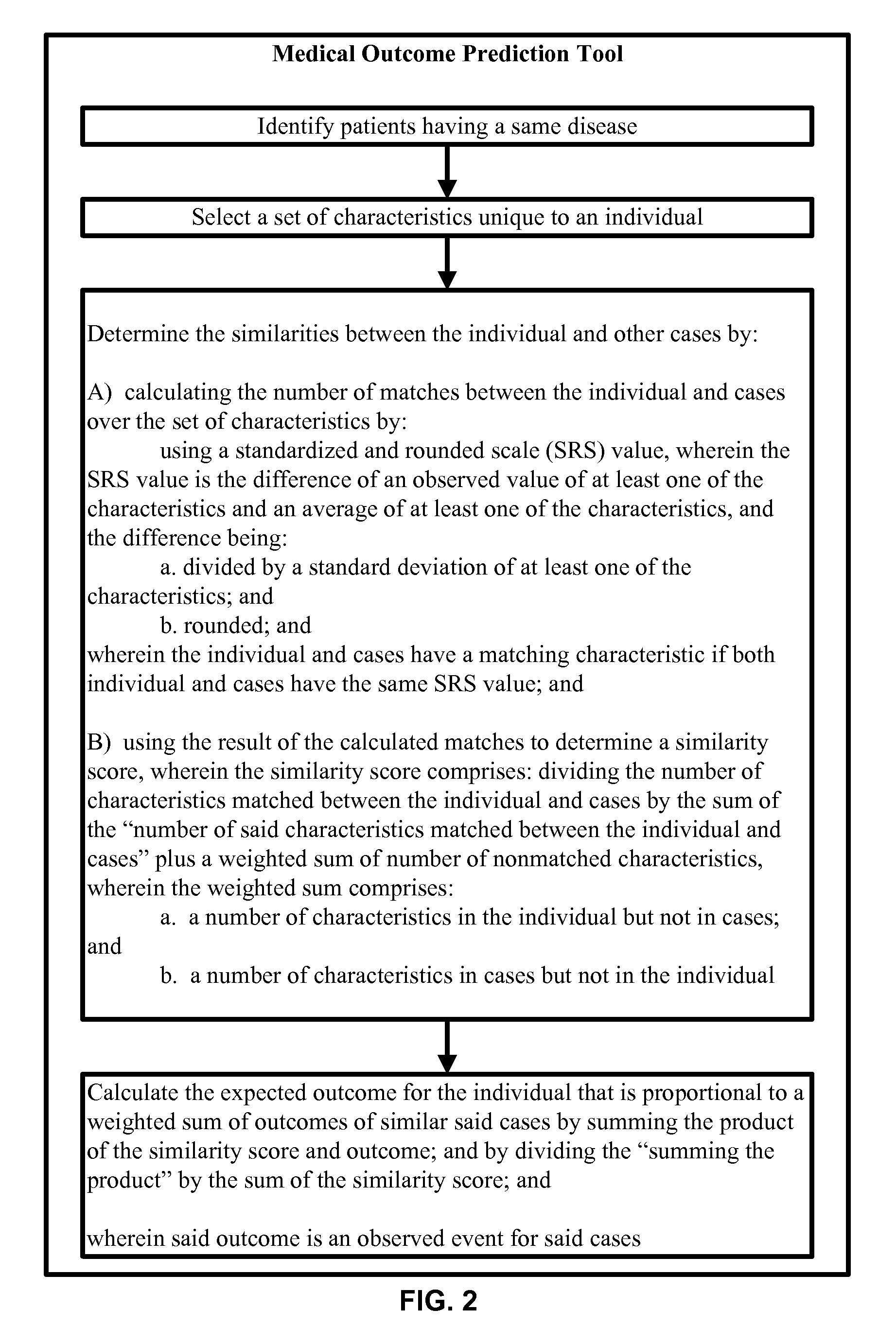Tailoring Medication to Individual Characteristics
a medication and individual characteristic technology, applied in the field of personalized care, can solve the problems of difficult to deduce from population/group studies what will work for an individual patient, complicated and less accurate approach of langheier, and assumption that does not seem reasonable in the context of personalized car
- Summary
- Abstract
- Description
- Claims
- Application Information
AI Technical Summary
Problems solved by technology
Method used
Image
Examples
Embodiment Construction
[0017]The present invention relates to a prediction model based on individual characteristics. In one embodiment, the present invention applies to predicting medical outcomes for a particular individual.
[0018]Referring to the figures, FIG. 1 discloses a medical outcome prediction tool that includes instructions for program for predicting an individual patient's medical outcomes. These instructions include identifying patients having a same disease; selecting a set of characteristics unique to an individual; determining the similarities between said individual and other cases; and calculating the expected outcome for said individual that is proportional to a weighted sum of outcomes of similar said cases.
[0019]It should be noted that the word “disease” is used interchangeably with the word “illness”. Disease / illness is any condition that causes or has a negative effect on a person's health, as determined by a physician, pharmacist, dentist, clinician, or as identified by a set of hea...
PUM
 Login to View More
Login to View More Abstract
Description
Claims
Application Information
 Login to View More
Login to View More - R&D
- Intellectual Property
- Life Sciences
- Materials
- Tech Scout
- Unparalleled Data Quality
- Higher Quality Content
- 60% Fewer Hallucinations
Browse by: Latest US Patents, China's latest patents, Technical Efficacy Thesaurus, Application Domain, Technology Topic, Popular Technical Reports.
© 2025 PatSnap. All rights reserved.Legal|Privacy policy|Modern Slavery Act Transparency Statement|Sitemap|About US| Contact US: help@patsnap.com



